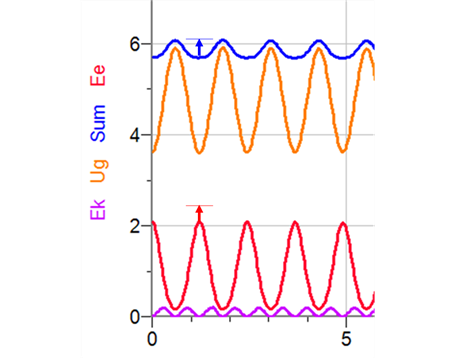In a physics experiment, we attempted to measure the kinetic, gravitational, and elastic energy of a mass on a spring (in order to illustrate conservation of energy). We measured the height of the mass via 1) A high-frame-rate video recording and 2) using sound waves, via a Vernier Go! Motion encoder.
However, with both methods, our total amount of energy fluctuates over time, having the greatest amount of energy when the system is at the top of its cycle, and minimum when it is at the bottom (near the ground).

Here's a summary of the applicable calculations. For some quick definitions...
- m is 0.94kg, the mass attached to the spring
- h is the current height of the mass above the ground
- v is the velocity, calculated using the derivative of h with respect to time
- g is assumed to be 9.8
- k is 34.162, measured via the spring
- x is the amount the spring is stretched, calculated by subtracting the current height, h, from the initial height (~0.74 m)
Calculated values:
- Kinetic energy (Ek) - 1/2 * m * v^2
- Gravitational energy (Ug) - m * g * h
- Elastic energy (Ee) - 1/2 * k * x^2
- Total energy (sum) - Obviously, simply the sum of all three types of energy.
We would think that the energy should be relatively constant (if not decreasing, due to thermal losses); however, energy instead stays relatively constant over time (at the peaks), but fluctuates throughout the cycle. If anyone has any ideas of what might be causing these strange oscillations, let me know!



